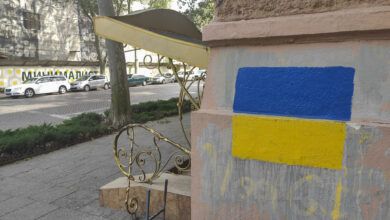Fears of Lanka-like economic collapse loom large across Asia

New Delhi/Bangkok, July 20 (EFE).- Unbridled inflation, dwindling currency value, and soaring energy prices are just a few of the elements of Sri Lanka’s deep economic crisis that have other Asian countries concerned.
The crisis in Sri Lanka stemmed from certain factors like poor economic management, a double blow to the tourism sector from the pandemic and terrorism, and flawed agricultural policy.
It resulted in a shortage of essential supplies and fuel across the island nation, sparking months of protests that finally brought down the powerful Rajapaksa dynasty, including the president, prime minister, and cabinet ministers.
Over the weekend, International Monetary Fund (IMF) Managing Director Kristalina Georgieva emphasized the “extremely uncertain” global picture due to Russia’s invasion of Ukraine and the disruption caused by the coronavirus outbreak and supply chain breakdown.
“Countries with high debt levels and limited policy space will face additional strains. Look no further than Sri Lanka as a warning sign,” said Georgieva during the G20 Finance Ministers and Central Bank Governors held in Indonesia.
Several emerging nations in Asia, including Bangladesh, Laos, Nepal, and Pakistan, are showing indications of slipping into the same spiral as Sri Lanka.
BANGLADESH
The situation in Bangladesh has prompted its government to approach the IMF for the first time in a decade for a loan of about $4.5 billion after record inflation and steps to limit the use of fuels, similar to those Sri Lanka was forced to adopt.
According to the Bangladesh Bureau of Statistics, the country saw 7.56 percent inflation in June, compared to 5.64 percent in the same month the previous year. It is the highest inflation rate since 2014.
Inflation and the gradual depreciation of the taka versus the dollar that has lost more than 7 percent of its value this year alone and have depleted Bangladesh’s reserves.
In addition to imposing two-hour power cuts, Bangladesh earlier this week approved the temporary closure of all diesel-run power stations and petrol outlets for one day per week.
The scenario is reminiscent of the long queues at Sri Lankan petrol stations and the regular nationwide outages that even last up to 13 hours.
LAOS
Laos could be the next to declare bankruptcy, as it suffers severe inflation after the coronavirus outbreak crippled its tourism business.
Furthermore, it is subject to restrictive monetary policies in nations such as the United States and risks defaulting on international loans.
Laos’ currency, the kip, has fallen by more than one-third versus the US dollar so far this year, while the poor landlocked country of 7.2 million has seen its public debt climb to $14.5 billion, equivalent to 88 percent of GDP, by 2021.
The war in Ukraine and rising gasoline and food costs have made the situation worse and are unsettling the country’s communist government led by the Lao People’s Revolutionary Party since 1975.
The sovereign debt rating of Laos was also lowered to “junk” status by the rating agency Moody’s in June.
NEPAL
According to its central bank, Nepal’s annual inflation increased to 8.56 percent in June from 4.19 percent the previous year.





